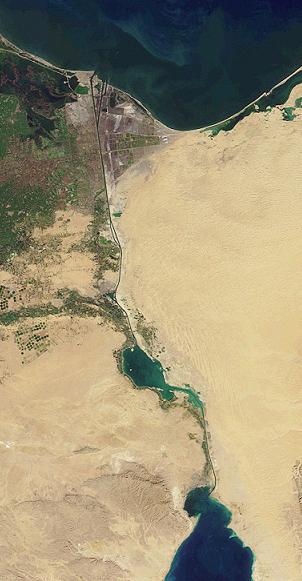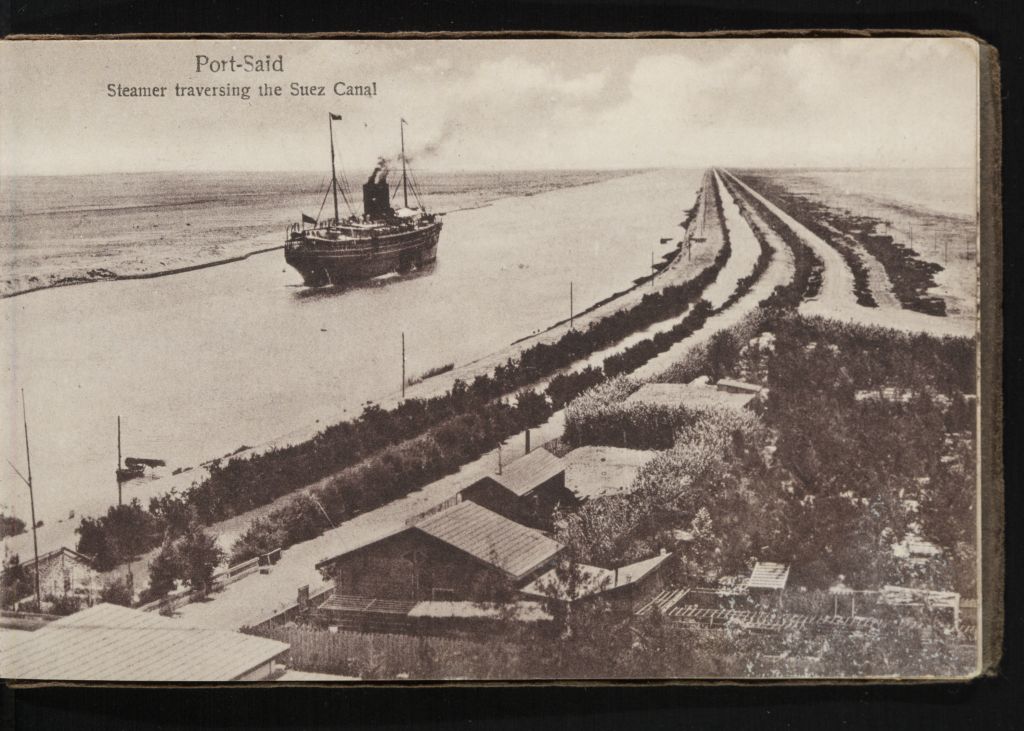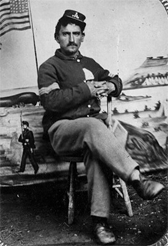Chestnut Street – Between Broad and Fourth
Whitman’s writing directly connected to this material topic is “The First Spring Day on Chestnut Street” from Whitman’s Specimen Days collection. In this piece of prose from around 1880-1881, Whitman expresses his joy and satisfaction at the scene on “Chestnut street — say between Broad and Fourth,” and explains why this part of Philadelphia stands out “even when compared with the great promenade-streets of other cities.”
Whitman describes a bustling scene from the first day of Spring between 1 and 2 in the afternoon, in which “nine-tenths” of the people are in great spirits to be there. A column in the August 6, 1923 edition of the Philadelphia Evening Bulletin reads, “The poet says that Chestnut [S]treet has a soul. It casts a spell. It is sacred ground. You must look your best when you walk down Chestnut [S]treet – everybody does” (“Men and Things”). Regardless of whether the “poet” cited in the column is Whitman, the sentiment is clearly one Whitman shares in his expressions of wonder. Even regarding the requirement to “look your best when you walk down Chestnut Street,” Whitman feels this is the norm: His second sentence notes the “gay-dress’d crowds,” and he later remarks on the “welldress’d women, ambulating to and fro.”
A Brief History of Time [regarding Chestnut Street]
Chestnut Street was originally laid in 1682 and named Wynne Street after Dr. Thomas Wynne, a Quaker friend of William Penn who traveled with Penn to the new colony. Penn would change the name to Chestnut Street the very next year as he renamed Philadelphia’s major streets after trees (“Chestnut St. 244 Years Old”).
George Washington once stayed at a building on 7th and Chestnut that by 1927 was the Green’s Hotel. Interestingly, Benedict Arnold was married in this same building (“Chestnut St. 244 Years Old”). The first Chestnut Street store opened in 1706 (“Merchants Plan Antique Vista”). By 1851, Philadelphia’s leading business were all located on Chestnut between 2nd & 10th, according to a pamphlet from 1851 published in 1926 by the Evening Bulletin (“Pamphlet Of 1851 Shows Old-Time Chestnut Street”).
A Rapidly Changing Street
According to a Philadelphia Evening Bulletin article from February 24, 1940, the North side of Chestnut Street between 11th and 12th had been a cow pasture in 1830, 50 years before Whitman’s writing. But per the will of Stephen Girard, the land was developed into houses between 1831 and 1837, with 16 of these houses actually on this block of Chestnut Street (“Cows Were On The Carpet”). Along with this article is a picture of that particular block [the North side] from 1864, which, though only 16 years before Whitman’s “First Spring Day” visit, would be drastically different from the view Whitman would have. For by the time of Whitman’s visit, the only “residence” still on Chestnut Street East of Broad was the Baldwin Mansion.
Whitman’s Experience – The Baldwin Mansion
In a catalogue published in 1922 by the Pennsylvania Academy of the Fine Arts, part of the entry on Hartman Kuhn reads, “1118 Chestnut Street, later known as the Baldwin Mansion, was occupied by the Union League Club 1862-1865” (Entry on Hartman Kuhn).
Whitman takes note of the Baldwin Mansion during a snapshot of his walk down the street [these snapshots in part and collectively form more “lists” or “catalogues” for which Whitman is famous]: “[T]he beauty of the cramm’d conservatory of rare flowers, flaunting reds, yellows, snowy lilies, incredible orchids, at the Baldwin mansion near Twelfth street.” As noted in the 1922 catalogue above, the Baldwin mansion in the 1860s played home to the Union League Club, an organization that maintained affiliation with not only Northerners geographically, but Republicans politically (Entry on Hartman Kuhn). There does not seem to be any indication that the mansion served as the main living quarters [during Whitman’s visit] for its owners or anyone else at least until it was sold to vaudeville producer Benjamin Franklin Keith in 1900 (“Keith May Open Another House”).
Whitman’s Experience – Widening Chestnut Street
In about his only negative comments in “First Spring Day,” Whitman laments the width of Chestnut Street: “Of course it is a pity that Chestnut were not two or three times wider.” The concern over the streets width was not limited to the bard: Between 1915 and 1925, there were at least 14 articles that appeared in the Philadelphia Evening Bulletin written on the subject of widening Chestnut Street.
Chestnut Street was widened at least somewhat as early as 1884, only a couple years after Whitman published Specimen Days. In an article from April 11, 1924, the Philadelphia Evening Bulletin reports on an unsuccessful suit resulting from the widening of Chestnut Street “under the ordinance of 1884” (“City Wins Street Suit”). This same ordinance is presumably the “old ordinance of Councils” referenced in an article from May 17, 1915 concerning an unsuccessful suit filed by John Wanamaker [the John Wanamaker] (“Wanamaker Loses Appeal”).
The bulk of the debate in the Evening Bulletin over whether to further expand Chestnut Street took place from 1921-1922, as this latter article [Wanamaker] is the only one from before 1921, and the only of the 14 articles from 1925 about street widening concerned the narrowing of sidewalks for the construction of a new subway (“Oppose Sidewalk Cutting”).
Another Center of “Commerce”
Another historical building on Chestnut Street was the Masonic Hall. In this early 19th Century, this hall “was the favorite place for all social and patriotic functions” (Barratt 3), and was where the defeat of Napoleon was celebrated with a grand dinner on February 24, 1814. Though the building burned down on March 9, 1819, it was rebuilt in 1820 (Barratt 9).
Here is an engraving of the Hall from around 1870, about 10 years before Whitman’s day on Chestnut street:

Masonic Hall on Chestnut Street - North Side between 7th & 8th Sts.
A Brief [Concluding] Synopsis
For more than a half century before Whitman, Chestnut Street served as a center for some of Philadelphia’s earliest national [read: Post-Nation-Founding] patriotism and gatherings of politicos. During the Civil War, it served as home to the fervent pro-nation Union League. For years before Whitman went to Chestnut Street, it was a bustling center of business.
In Whitman’s time, the street was a rapidly-changing promenade, but amidst the changes maintained its status as Philadelphia’s commerce center and all-around “happening place.” From all evidential indications, Whitman’s wonder at the street’s personality is well-earned, and his account an accurate description of the street’s typical scene historically.
References
Barratt, Norris S. & Sachse, Julius Friedrich. Freemasonry in Pennsylvania, 1727-1907. Volume 3. The New Era Printing Company: Lancaster, PA. 1919.
Entry on Hartman Kuhn. From the Catalogue of the Memorial Exhibition of Portraits by Thomas Sully. By Pennsylvania Academy of the Fine Arts. Philadelphia. 1922.
“Keith May Open Another House.” From “William Wegener in Grand Opera.” Special to the New York Times. August 9, 1900. The New York Times Archives. Accessed October 21, 2009. <http://query.nytimes.com/gst/abstract.html?res=9505E4D9143DE433A2575AC0A96E9 C946197D6CF>.
“Masonic Hall” [Chestnut St. abv., 7th, N. side]. Copy of engraving by William Kneass after William Strickland. Topics: Robert Newell Photographs from the Library Company of Philadelphia. From the Brenner Collection. Accessed October 21, 2009. <http://www.brynmawr.edu/iconog/nwl/Nwltopic.html>.
Philadelphia Evening Bulletin, Chestnut Street – Miscellaneous – 1969 & Prior, Chestnut St. 244 Years Old, March 18, 1927, Philadelphia, Temple University Libraries, Urban Archives, Philadelphia, PA.
Philadelphia Evening Bulletin, Chestnut Street – Miscellaneous – 1969 & Prior, Cows Were On The Carpet, February 24, 1940, Philadelphia, Temple University Libraries, Urban Archives, Philadelphia, PA.
Philadelphia Evening Bulletin, Chestnut Street – Miscellaneous – 1969 & Prior, Men and Things, August 6, 1923, Philadelphia, Temple University Libraries, Urban Archives, Philadelphia, PA.
Philadelphia Evening Bulletin, Chestnut Street – Miscellaneous – 1969 & Prior, Pamphlet Of 1851 Shows Old-Time Chestnut Street, April 11, 1926, Philadelphia, Temple University Libraries, Urban Archives, Philadelphia, PA.
Philadelphia Evening Bulletin, Chestnut Street – Widening, City Wins Street Suit, April 11, 1924, Philadelphia, Temple University Libraries, Urban Archives, Philadelphia, PA.
Philadelphia Evening Bulletin, Chestnut Street – Widening, Oppose Sidewalk Cutting, February 5, 1925, Philadelphia, Temple University Libraries, Urban Archives, Philadelphia, PA.
Philadelphia Evening Bulletin, Chestnut Street – Widening, Wanamaker Loses Appeal, May 17, 1915, Philadelphia, Temple University Libraries, Urban Archives, Philadelphia, PA.
Philadelphia Inquirer, Chestnut Street – Miscellaneous – 1969 & Prior, Merchants Plan Antique Vista, August 26, 1956, Philadelphia, Temple University Libraries, Urban Archives, Philadelphia, PA.








